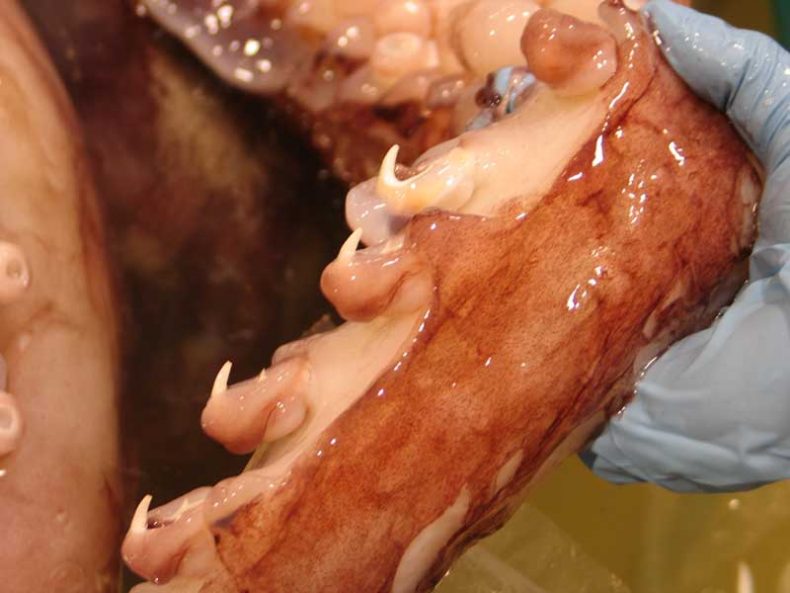In 1978, the USS Stein, a US Navy frigate, suddenly had an emergency that resulted in an immediate reroute to its home base – the radar system responsible for identifying submarine threats suddenly went unserviceable (US). The Stein headed for land and reached dry dock so that the engineers could examine the fault, which likely laid somewhere around the massive 27,215-kilogram (59,999 pounds) dome attached to the front of the ship’s hull.
However, upon inspection of the sonar dome, the engineers found something they certainly weren’t expecting. The rubber “NOFOUL” coating of the dome was shredded, with large tears covering around 8 percent of the surface, according to a Navy magazine at the time. With some tears reaching up to around “four feet long”, the coating was damaged by something with some serious power. In fact, huge teeth were left at the bottom of most of the scratches, and witnesses noted that it looked as though a congregation of alligators had swarmed the critical piece of tech.
In an effort to understand the “Stein Monster”, Navy biologist F.G Wood was called to inspect the NOFOUL coating. He noted that the teeth, or claws, found on the dome were the likely culprits of the large tears, demonstrating that they perfectly matched the width of each.
He concluded it was a massive squid, owing to the structures of the teeth, but didn’t rule out something that hasn’t yet been found in the ocean. The only snag is that it has widely been reported that a giant squid with teeth like this would have to be in the region of 45 meters (150 feet) long, making it around half the length of the Statue of Liberty.
So, was it Cthulu, the Kraken, or some mythical abyssal squid? No, but it likely was an animal of impressive size. The claws embedded in the coating appear to belong to a colossal squid, which differs from its giant squid relative by overall body mass and large hooks that line the tentacles. These hooks are used for latching on to prey and can even tear prey apart, making it one animal you really don’t want a hug from.

The hooks of a colossal squid. Image Credit: Museum of New Zealand
Squids such as this have been documented attaching themselves to vessels on the sea’s surface as they approach end of life, as seen in this paddleboarder’s video where a giant squid wraps its tentacles around his board.
It could be that the possible squid was approaching death and came to the surface, latching onto the Stein for a final ride. Alternatively, markings akin to a colossal squid attack have been found on sperm whales, their only known predator, which would suggest the two species have aggressive encounters relatively regularly. It may be that the large dome of the Stein looked like a whale, and the squid attacked.
Whatever it was, the Stein Monster would likely be one of the largest specimens ever discovered, if they had found it. Instead, maybe the squid recognized it wasn’t quite ready to tackle a warship, and lurked back into the depths to continue feasting on the bodies of sailors dragged to their doom, or whatever else Krakens do.
Source Link: The USS Stein Monster: In 1978, A Massive Creature Attacked A Navy Frigate, Shredding Parts Of Its Hull